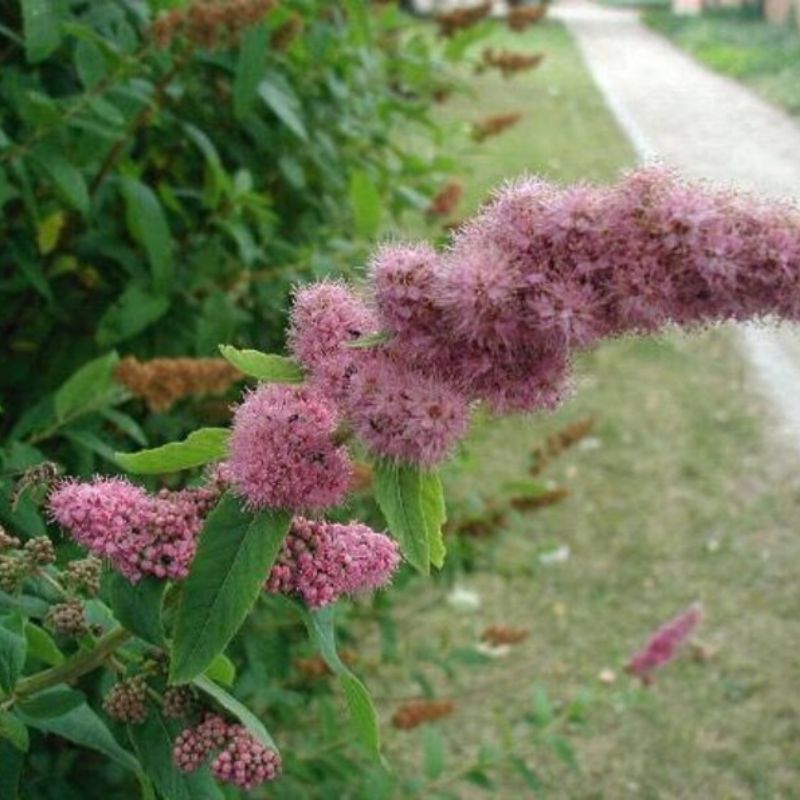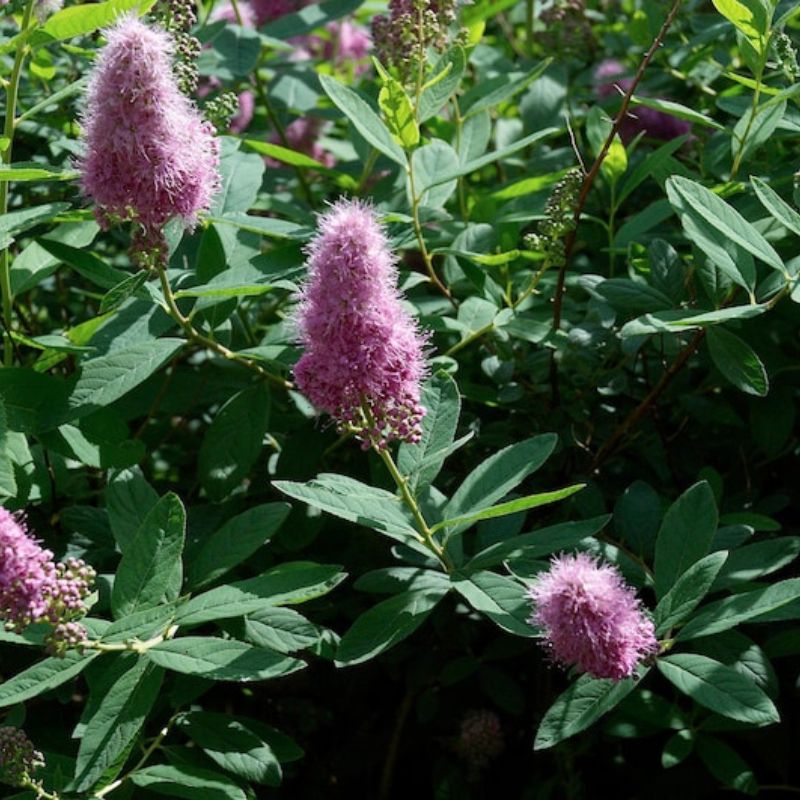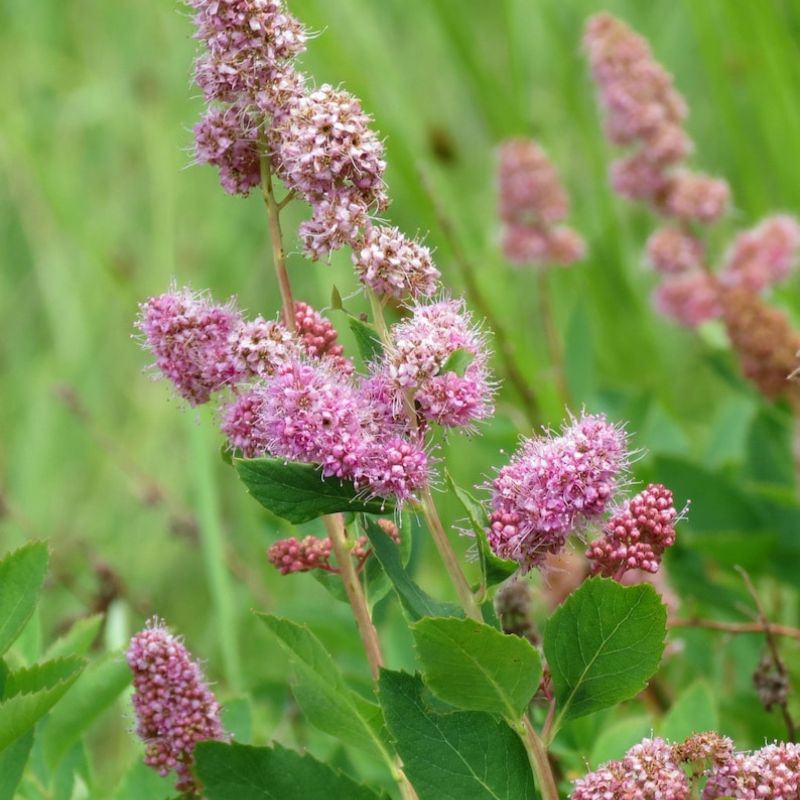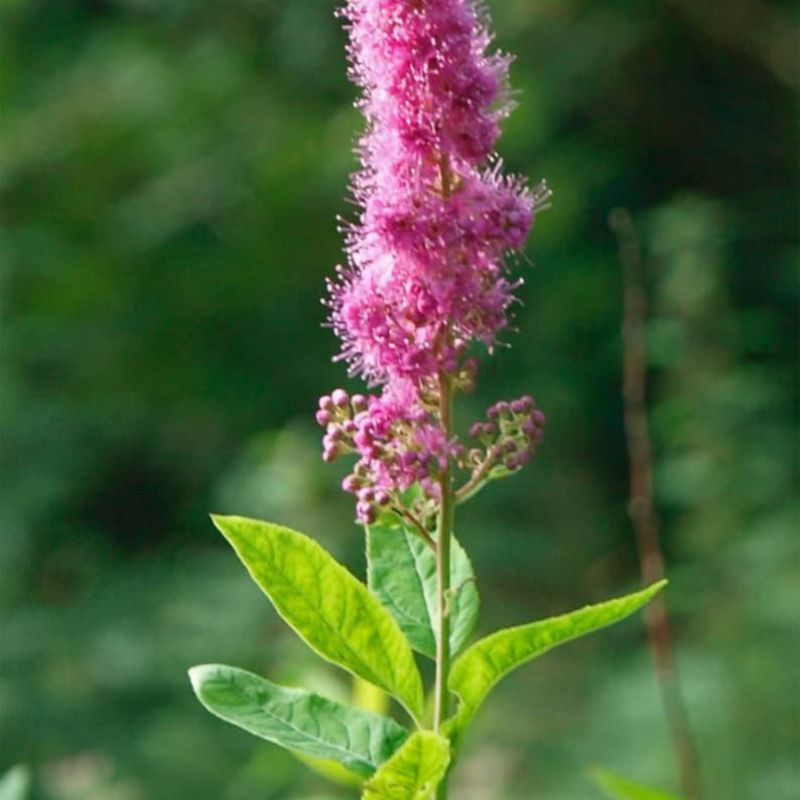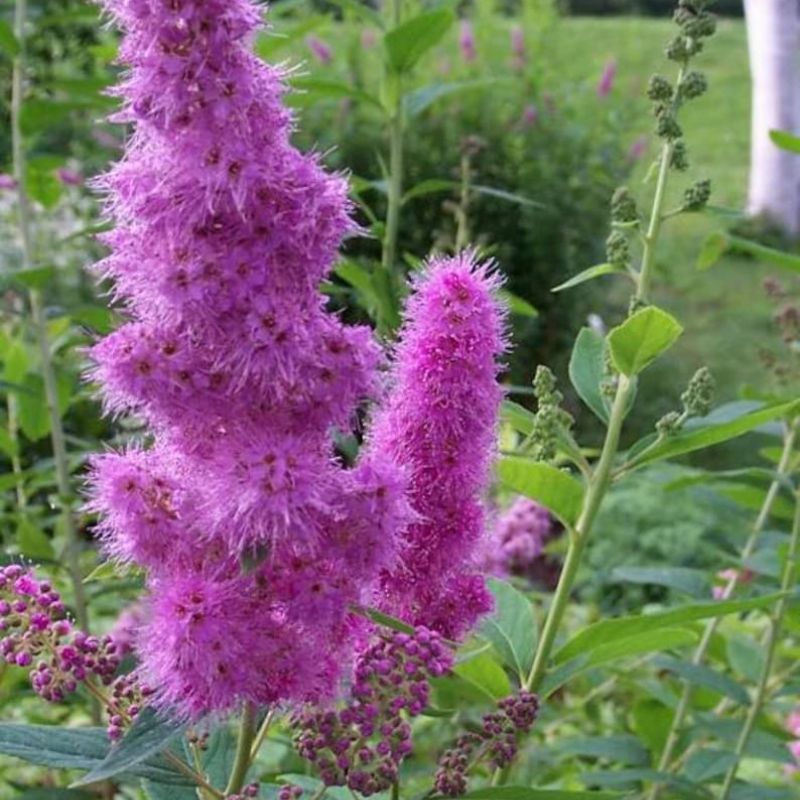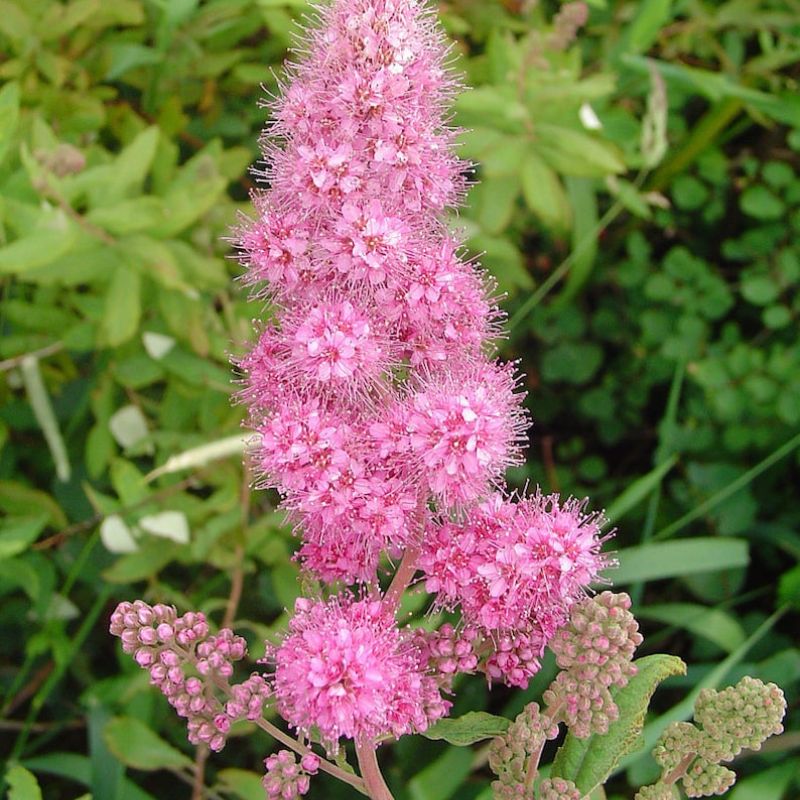- Historical context: Spiraea douglasii, commonly known as Douglas' spirea or Hardhack, is a plant species native to western North America. The 'Roseata Lutea' is a cultivar of this species.
- Geographical origination: The plant is native to western North America, from Alaska across southwestern Canada and the Pacific Northwest, south to northern California.
- Relevant cultural significance: The plant has been used by native tribes for various purposes. The Stl'atl'imx (Lillooet) people of British Columbia used it for making baskets.
- Time period of discovery: The plant was first described by David Douglas, a Scottish botanist, in the 19th century.
- Original habitat: The plant is found in wetlands, marshes, and swamps.
- Notable historical uses: Historically, the plant has been used for ornamental purposes and for making baskets.
- Ideal temperature range: The plant prefers a temperate climate.
- Soil type: It grows best in moist, well-drained soil.
- Sunlight requirements: The plant requires full sun to partial shade.
- Watering needs: It needs regular watering, especially in dry conditions.
- Planting season: The best time to plant is in the spring.
- Germination time: Germination time varies, but seeds generally sprout in the spring.
- Growth cycle duration: The plant is a perennial, meaning it can live for more than two years.
- Common pests and diseases: Common pests include aphids and spider mites. Diseases include powdery mildew and leaf spot.
- Companion planting advice: It can be planted with other wetland plants and perennials.
- Common challenges and solutions: The plant can become invasive if not controlled. Regular pruning can help manage its growth.
- Nutritional values: There is no specific nutritional information available for this plant.
- Health benefits: There are no known health benefits of this plant.
- Culinary uses: The plant is not typically used for culinary purposes.
- Medicinal uses: There are no known medicinal uses of this plant.
- Other unique advantages: The plant is valued for its ornamental qualities, including its feathery, rose-pink flowers and its ability to attract butterflies.
